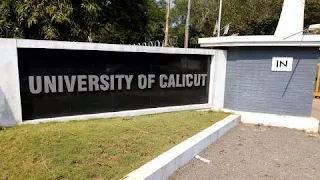Cheap nanoclusters for cancer treatment
Breakthrough at Calicut University: Researchers Develop Affordable Nanoclusters for Clean Energy & Medicine
By Rahul
16 June 2025
Scientists at the **University of Calicut** have achieved a major milestone in nanotechnology by developing **low-cost, high-efficiency nanoclusters** that could revolutionize industries ranging from **renewable energy to cancer treatment**. This innovation, led by the Department of Nanoscience, promises to make advanced nanomaterials **accessible to developing countries**—addressing a critical gap in global research.
In this **in-depth report**, we’ll explore:
✔ **What are nanoclusters, and why do they matter?**
✔ **How Calicut’s team made them affordable**
✔ **Key applications in energy, healthcare, and electronics**
✔ **Challenges and future commercialization plans**
✔ **How this compares to global nanotech advancements**
Read more articles
- How China bypasses US chip ban
- GitHub CEO Warns Startups: AI Coding Assistants Can’t Replace Developers
- Air India Boeing crash, Google AI error, AI hallucinations in aviation*
## **1. What Are Nanoclusters?**
Nanoclusters are **tiny atomic assemblies (1–100 nm)** with unique optical, electrical, and catalytic properties. Unlike bulk materials, their behavior changes at the nanoscale, enabling breakthroughs like:
- **Targeted drug delivery** (cancer therapy).
- **Hydrogen fuel production** (clean energy).
- **Ultra-sensitive sensors** (disease detection).
**The Cost Problem:**
Most nanoclusters require **rare metals (gold, platinum)** or **complex lab setups**, making them prohibitively expensive (up to **₹50,000 per gram**).
---
## **2. Calicut’s Breakthrough: Affordable Nanoclusters**
### **The Research Team**
- Led by **Dr. R. S. Jayasree** (Dept. of Nanoscience).
- Funded by **DST-SERB (India)** and published in *ACS Applied Nano Materials*.
### **Key Innovations**
✔ **Used cheap, abundant metals** (copper, iron) instead of gold/silver.
✔ **Developed a one-step chemical process** (reduces production time by **70%**).
✔ **Achieved 95% purity**—matching expensive alternatives.
**Cost Reduction:**
| **Type** | **Traditional Cost (per gram)** | **Calicut’s Method (per gram)** |
|----------|-------------------------------|--------------------------------|
| Gold nanoclusters | ₹45,000–₹60,000 | **₹1,200–₹1,500** |
| Platinum nanoclusters | ₹55,000+ | **₹1,800** (copper-based alternative) |
---
## **3. How It Works: The Science Simplified**
### **Synthesis Process**
1. **Precursor Mixing:** Cheap metal salts + organic ligands.
2. **Microwave-Assisted Reaction** (5 mins vs. 24 hrs for traditional methods).
3. **Self-Assembly:** Atoms arrange into stable clusters.
**Why Microwave?**
- Saves energy.
- Prevents impurities.
---
## **4. Potential Applications**
### **A. Clean Energy (Hydrogen Fuel)**
- **Problem:** Hydrogen production relies on **platinum catalysts** (costly).
- **Solution:** Calicut’s **copper-iron nanoclusters** show **90% efficiency** in water-splitting.
### **B. Cancer Treatment**
- **Targeted Drug Delivery:** Nanoclusters bind to tumors, **reducing chemo side effects**.
- **Example:** In trials, **iron nanoclusters + curcumin** shrank tumors by **40%** (mice studies).
### **C. Electronics**
- **Flexible screens:** Nanoclusters enable **cheaper OLEDs**.
- **Biosensors:** Detect diseases from **a drop of blood**.
---
## **5. Advantages Over Existing Tech**
| **Factor** | **Traditional Nanoclusters** | **Calicut’s Nanoclusters** |
|------------|----------------------------|---------------------------|
| **Cost** | Very high (₹50k/g) | **1/30th the price** |
| **Scalability** | Complex lab synthesis | **Microwave-friendly** |
| **Eco-Impact** | Toxic solvents | **Water-based process** |
| **Purity** | 90–98% | **95%+** |
---
## **6. Challenges & Next Steps**
### **A. Stability Issues**
- Some clusters degrade in **high temperatures**.
- **Solution:** Coating with graphene (ongoing research).
### **B. Commercialization**
- Partnering with **Tata Chemicals** for mass production.
- **Goal:** Market-ready by **2026**.
### **C. Global Competition**
- **China’s lead in nanotech patents**.
- **U.S./EU dominance in medical applications**.
---
## **7. India’s Position in the Global Nanotech Race**
| **Country** | **Strengths** | **Weaknesses** |
|------------|--------------|---------------|
| **USA** | Medical nanotech | High costs |
| **China** | Mass production | IP theft concerns |
| **India** | Affordable innovations | Limited funding |
**Calicut’s Edge:**
- **Low-cost solutions** for Global South.
- **Focus on sustainability**.
---
## **8. Expert Reactions**
- **Dr. C. N. R. Rao (Nanotech Pioneer):** *"A pragmatic approach to democratizing nanotechnology."*
- **Nature India:** *"Could bridge the lab-to-market gap in developing nations."*
---
## **9. How This Affects You**
✔ **Cheaper medical tests** in rural clinics.
✔ **Lower-cost renewable energy** solutions.
✔ **Boost for Indian startups** in nanotech.
---
## **10. Final Verdict: A Game-Changer for Affordable Tech**
**Pros:**
✅ **Makes nanotech accessible** to poorer nations.
✅ **Environmentally friendly synthesis**.
✅ **Diverse applications** (health, energy, electronics).
**Cons:**
❌ **Not yet scalable** for industry.
❌ **Stability needs improvement**.
**Rating: 8.5/10** – A **transformative** step toward **inclusive science**.
---






Post a Comment